- Equestrians are protesting hyperflexion through means which do not motivate abusers to change – i.e. silent protests at competitions, speaking out through niche internet, signing of petitions, etc.
- Hyperflexion is money motivated and those who are making the most money are using the technique.
- “Equestrians” impressed by abusive riders are willing to move in packs and use loud voices in support of hyperflexion and the ‘success' it brings.
- The FEI endorses hyperflexion.
- Veterinarians publicly support the use of hyperflexion.
- Hyperflexion creates more animated movement from the horse to please an uneducated crowd, making hyperflexion a tool to market a sport once seen as boring drivel to those uninitiated.
- Hyperflexion creates Olympic gold medalists and ‘partnerships' who score the highest test % ever awarded.
- Hyperflexion creates Internationally competitive Grand Prix horses in 3-4 years.
- Horses behind the vertical is a normal sight in pictures, video and live, on a global scale.
- Abusive riders excuse proof as a “one time event” and not part of their normal routine.
- Bonus Reason — Hyperflexion is cross-discipline and has infiltrated horsemanship for longer than most would likely want to admit, even the Classical Dressage groupies (of which I cannot be completely excluded from).
#1 — PUBLIC OUTCRY
Hyperflexion is in some way connected to the abuses given to African American slaves, women prior to the feminist movement, many lab animals. Certainly it is not a human suffering, but it is a living being on this plant none-the-less and in the same way the horse is suffering for the sake of money and power. It took the violent sweep of the anti-slavery movement to see African Americans move out of the ‘public opinion' of being less than and even animalistic and to appreciate the same rights and humanities of other Americans. Women were seen as weak and in need of men's guidance and care, even if at times violent and sadistic. The feminist movement and women's sufferage was not a gentle journey won by quiet voices. Many companies will not seek to right things which are dangerous to their customers until threat of public media involvement is made in a widespread manner.
Making hyperflexion an outcry to the PUBLIC – not just the equestrian community – may help raise the hairs on the neck of those who use it and support it including sponsors who fund it's continued use. Many equestrians are still in the dark even about what hyperflexion is, why it is bad for the horse and what can be done to stop it.
Many have a notion that keeping the resolution of hyperflexion somewhat out of the public eye will help keep PETA and other animal rights activists from gaining a foothold towards removing all rights of equestrians in the use of horses. Is the fear of losing your own right greater than the present knowledge the the horse has lost his?! I can think of no more selfish thought than this. Secondarily, if this argument is to be made I can think of no better supportive argument than to take the side of PETA, etc because it is obvious that the selfishness of the equestrian community has grown to such an extent that it can no longer be entrusted to put the horse's needs and welfare above it's own interests be they emotionally or commercially driven.
#2 — MONEY
You've heard of the golden rule before? Those with the most gold make the rules? Words to live by in this society, unfortunately. Take away the money and the well will dry up and move on to greener pastures. Just as energy efficient means will not lead the globe until they can make more money than traditional fossil fuels, top equestrians will not stop using hyperflexion until it proves to no longer be profitable.
#3 — CULT SUPPORT
Beware the person with too much confidence, fanfare and a loud voice – for they are surely the most foolish. If this isn't a quote perhaps it should be. When I was a younger rider I always thought I knew exactly what was right and what was wrong, the best methods and what should be avoided. I had all the answers and if I didn't it was because they didn't exist. I've grown up a bit and in the years between then and now the greatest thing I have learned is that the quietest voice is often the most informed, or at the very least the one who is observing the most. Perhaps they are just asleep in class. Whatever the case may be… I tend to avoid people who always know the answers when it comes to horses.
That being said, I have also observed that equestrians who do well in competition often use shortcuts – both intentionally and unintentionally. And that competitors who are doing well often have a following of not as advanced of competitor equestrians or hopeful competitors. And those followers *love* the person they are following – of course if they didn't why would they be following them? So in order to be correct in following this person they will defend them tooth and nail to the death in support of every action and intention of said followed equestrian competitor. They are unafraid to voice their opinion loudly because what they have to lose is their own belief that the person they are learning from and likely hold in very high esteem is flawless and perfect. And if they happen to lose this belief their whole world could be in a tailspin. Do you want to be right or do you want to be happy I have to wonder? Often people prefer to be right in just such a case…
As a result, louder voices are heard above quieter voices.
#4 — FEI ENDORSES THE ABUSE
As if hyperflexion needed a booster seat, the FEI – the international governing body of olympic sports – steps up to the plate and gives it the green light and a get out of jail free card. What ‘professional' can be made liable for abusing a horse when they are only using a method that their sporting association, which just so happens to hold as president the Princess of Jordan, says can do no harm if used by said professional? Exactly.
Of course this shouldn't come as a surprise when they are also renegotiating ideas which would allow fewer restrictions on the doping and drugging of horses in competition. There is a reason that rules are in place to limit things that dull the horse's ability to voice it is in pain or breaking down – because he cannot do it with words and is at the mercy of those gaining profit through exploitation. Yep, I said it – exploitation.
#5 — VETERINARIANS ENDORSE THE ABUSE
How do you bring a strong man down? Cut him off at the knees and strap lead to his back. As if the above reasons were not enough weight to tow behind the half-dead pick up truck, lead veterinarians have publicly stated that hyperflexion is not physically harmful to the horse. Those bulges we see at the 3rd cervical vertebrae are now “normal” side effects of competition horse training. The unusual muscle development of the neck is standard.
It has been my personal experience that veterinarians are human, which means that not only are the subject to making mistakes and lacking knowledge in their so called area of ‘expertise'… they are also easily intimidated and or convinced to support a cause if they are in the right social circles. I tend to be a bit suspicious of allopathic medical ‘professionals' be they human doctors or animal, and the supporting documents for hyperflexion only adds fuel to my fire.
#6 — EXTRAVAGANT MOVEMENT
Think of hyperflexion what soring is to Tennessee Walking horse big lick shows. It is what creates the flash and boom and draws the crowds of uninformed and potentially horse-illiterate spectators. The TWH Celebration annually draws thousands, when is that last time you saw a national dressage show perform in the same way? In the following video take a look at the sheer crowd in the stands at the 2007 NYPD Walking Horse Celebration.
I remember the first dressage shows I attended, they really were boring. Why? I liken it to watching someone meditate, or that is what it should be like – two beings meditating together to form a partnership of invisible communication. Now that meditation has to be marketable it is being spiced up. A bit like turning tai chi into MMA death matches.
#7 — MAKES WINNERS IN THE SPORT
Anky van Grunsven was the top rider for many years. She has only allowed this title to slip a bit by making room for others who now use hyperflexion as well. The last Olympic games I watched in China made me want to throw up as horses who were not forward, on the forehand, behind the bit, crooked, constant tail swishing, etc were the norm and being praised and glorified by thousands of adoring fans. I had to turn off my tv, go outside and praise be to my horses that I have not bought into such disgust. Mostly my horses just snorted and munched at grass.
Recently Edward Gal riding Moorlands Totilas scored a 92.30% in London. This is the highest score ever recorded for a competition, let alone of the caliber – a World Cup Qualifier. The horse's movement is reminiscent of Anky van Grunsven's Salinero if you ask me, complete with the horse behind the bit at the halt, tail swishing, leg mover, etc etc etc. The list goes on.
#8 — SHORTENS TRAINING TIME
Andreas Helgestrand rode to victory in 2006 on Blue Horse Matine – a 9 year old mare.
Of course Blue Hors Matine also died unexpectedly by breaking her leg when she was 13 years old, one last injury in a long line of them that began just after this competition.
#9 — BEHIND THE VERTICAL IS NORMAL / COMMON
Pretty self-explanatory. Do a google search for something rather inert in connection to horses and you will find a plethora of images showing riders with horses whose noses are behind the vertical. Behind the vertical is behind the vertical, period. End of sentence and argument. I've heard it all before and people will likely continue to argue the point that ‘it was only one moment captured in time' or that their horse is always like that, etc. Horses ridden forward as they ought to be are not behind the vertical with their nose. If the horse is behind the vertical, he is NOT forward – maybe fast, but not forward. One moment captured in time 10+ times over is not ‘one moment captured in time'.
#10 — EXCUSES
Can anyone else hear in this statement “WIFE BEATER”? See above – if it has happened more than once it is not a one time event. If it has been captured for more than a split moment, it is more than a split moment. Fairly black and white. Abusers often argue this point, of it was a one time thing, it isn't as bad as it looks, it doesn't last as long as it seems, blah blah blah. They are excuses, manipulative excuses. Why? Because if they can get away with it they will, they have not changed and likely will not change. Why are abusers and users of hyperflexion allowed to continue telling us what limits should be allowed in regards to abuse? Seems a bit like an alcoholic saying what the legal blood-alcohol limit should be for drunk driving.
#11 (BONUS) — CROSS-DISCIPLINE
You can find it in jumpers, hunters, western riders, english riders, saddleseat, hunt, etc. While it is more prevalent in some disciplines over others the truth of the matter is that the majority of equestrians believe that control of the horse is gained largely by manipulating the neck. Yes, control can be had in this way but it is also mistakenly referred to as building a relationship, communication, a partnership, etc. Plain and simple it is a physical way to control the horse and avoiding communication and removing choice from the horse's options.
Classical Dressage is often pitched as a ‘faultless' practice and following that deviates from the intentions of competitive Dressage. This is like saying that because you call yourself a Christian you love your neighbor, honor your mother and father, and never sin or think impure thoughts. A name does not prove and action.
I wouldn't call myself a groupie, per se, I enjoy the thoughts behind Classical Dressage while also acknowledging the fact that CD Masters or ODGs (Old Dead Guys for short) were human as well and because they are dead we cannot see with our own eyes as to the purity of their actions or truth behind their words. The internet should prove well enough that written words will never equate to spoken words just as pictures will never do justice to watching the same in person. There have been hints that Francoise de la Gueriniere may have used hyperflexion, largely in part of the images in some of his books. The Duke of Newcastle may have been suspect. Francoise Baucher has been touted as using hyperflexion heavily and is the one that Sjef Janssen ‘blames' for imparting and inspiring the use of it with Anky van Grunsven. Reiner Klimke has been accused by a few small voices in the background. The Spanish Riding School has also been implicated among other national schools. No one is safe from the accusations. The truth of the matter is that whether Masters or ODGs used hyperflexion is irrelevant. As mentioned above, it only matters if a follower of one method or man over another wishes to be right rather than to be happy.
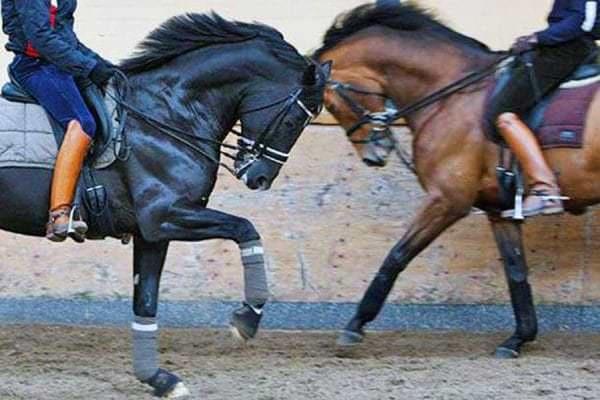


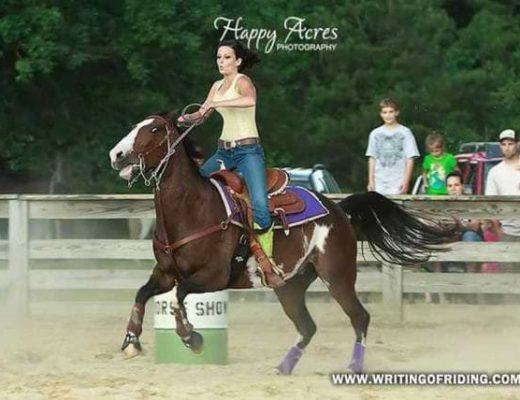

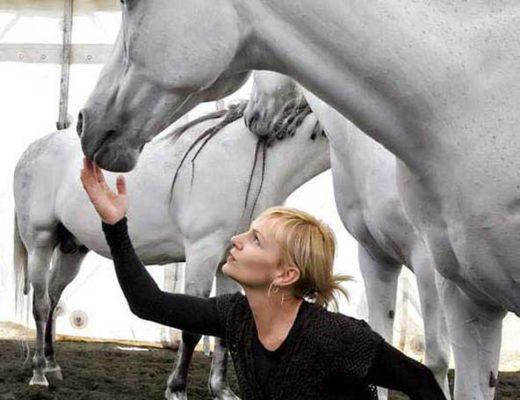
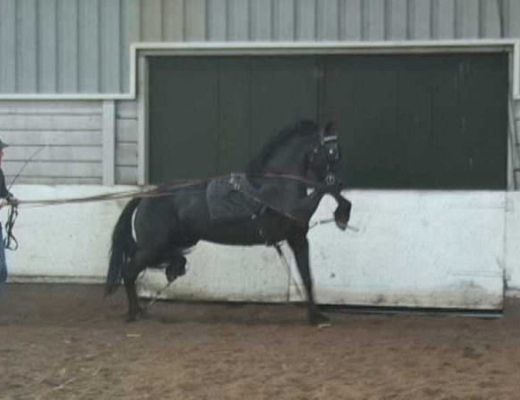
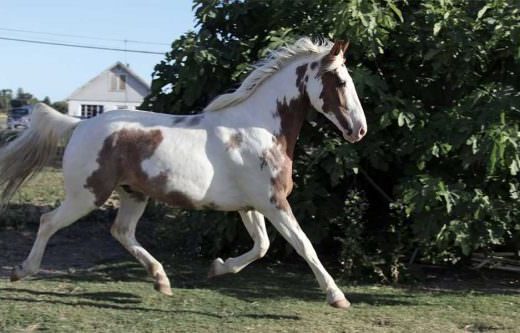
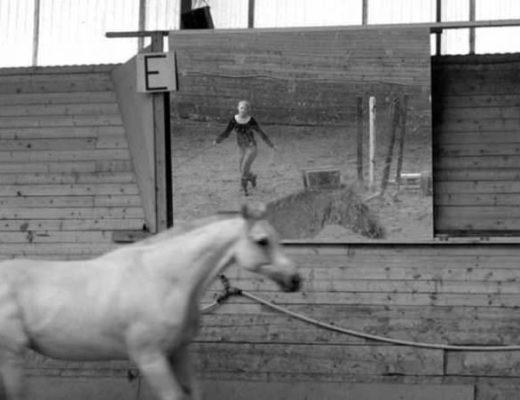
How true these are. It is actually depressing the amount of ‘wrong-doing’ that is going on in the horse world. It’s not just rollkur…or even just limited to rollkur. There is ignorance in the management side of horses as well.
Keep up the good work bringing these issues to light!
Every time I find someone who has the same ideas and standards as myself I get excited.
After reading your material I find myself very excited. Excited to find another so versed in equestrian knowledge and able to translate their thoughts clearly, concisely and effectively to fellow equestrians.
You now have a new fan.
The music from the TWH video sounds like you are at the circus – and then the guy walking around with the shovel – send in the clowns.
I am totally with you here. Wow. This is never, never okay. A broken leg at 13??? F***ing heartbreaking.
What’s very telling is the string of injuries leading up to it. Sure freak accidents happen where a horse breaks a leg, but lots of accidents otherwise? Hmmm. 🙁
Hello, nice speaking, but i have a question, can you be mistaken the decontraction of the mouth in the halt, that used to be used by de la gueriniere, baucher, and in one video we can see nuno himself using it, to the hiperflexion you say?
The only way to solve a problem is by reasonable gimnastics, not by force, nor unnatural postures.
Kind regards from argentina, keep this job up.
Hi Guido,
Are you possibly referring to what Baucher called ‘ramener outré’? I would refer you to this excellent (and brief) article which addresses that in relation to the current trend of hyperflexion: http://www.carregdressage.co.uk/whocares.html
And to quote from it –
“The issue at hand is not what it is classical or not but rather is it ethical to use any means to achieve your goal, in this case a winning Grand Prix test. Many well known modern riders and trainers seem to justify what has now been officially described as hyperflexion of the neck as a necessary tool to produce the modern dressage athletes, whose power and athleticism they so admire.That the modern dressage horse is in many ways superior to the horses competing in the 50s and 60s is in no doubt but this has much more to do with the considerable skill of the continental breeders than any change in training.They do show extravagant paces but extravagance does not always equate with being correct. The extended trot of some GP horses is often more similar to what in the circus used to be called “Spanish trot”. The reason I mention the circus is not for the sake of provocation but because this is where this “new” and modern method of training comes from.
“In the mid 1800s the brilliant circus trainer Francois Baucher described in great detail a method he used occasionally which he called “ramener outré” which translates exactly as extreme over-bending or hyperflexion of the neck. He explained that its great advantage was that it gave complete control over the neck structure and provoked an extreme submission of the horse. He excused his techniques by explaining that as a circus rider he needed such methods to produce the evermore spectacular movements which kept his public entertained. Baucher suffered a tremendous amount of criticism from the German press and leading German trainers of the time.
“So, do we really need to train horses using methods where the horse is so over-bent that it cannot physically see beyond its front feet and in some cases not even that far. To most outsiders I would think this would be considered a form of abuse whether or not it is performed by expertsThe rules of the FEI require: “The harmonious development of the physique and ability of the horse”.
“The question to debate is not classical versus modern but whether we wish to allow the fashion for extravagant show paces to override any ethics in training. Is it still relevant to strive to maintain the previous standard of purity of pace and correct execution of all movements?Does the FEI intend to promote show business by any means or is it still going to try and maintain the art of riding. Harmony is not just for show it must be maintained throughout the whole training.
“It is interesting to note that Francois Baucher abandoned the methods he once used and in later life chose to concentrate on lightness and the purity of the paces.
There has indeed been great progress in some aspects of modern training, in particular, a much better understanding of the functioning of the horse’s back and, yes, more power and elasticity, but the ethical stance which is at the core of classical training must be maintained if we are to keep the art of riding.”
And I concur with your statement that it is through reasonable gymnastics, not force, that problems are solved. 🙂
Cheers,
Erica
Hi Guido,
Are you possibly referring to what Baucher called ‘ramener outré’? I would refer you to this excellent (and brief) article which addresses that in relation to the current trend of hyperflexion: http://www.carregdressage.co.uk/whocares.html
And to quote from it –
“The issue at hand is not what it is classical or not but rather is it ethical to use any means to achieve your goal, in this case a winning Grand Prix test. Many well known modern riders and trainers seem to justify what has now been officially described as hyperflexion of the neck as a necessary tool to produce the modern dressage athletes, whose power and athleticism they so admire.That the modern dressage horse is in many ways superior to the horses competing in the 50s and 60s is in no doubt but this has much more to do with the considerable skill of the continental breeders than any change in training.They do show extravagant paces but extravagance does not always equate with being correct. The extended trot of some GP horses is often more similar to what in the circus used to be called “Spanish trot”. The reason I mention the circus is not for the sake of provocation but because this is where this “new” and modern method of training comes from.
“In the mid 1800s the brilliant circus trainer Francois Baucher described in great detail a method he used occasionally which he called “ramener outré” which translates exactly as extreme over-bending or hyperflexion of the neck. He explained that its great advantage was that it gave complete control over the neck structure and provoked an extreme submission of the horse. He excused his techniques by explaining that as a circus rider he needed such methods to produce the evermore spectacular movements which kept his public entertained. Baucher suffered a tremendous amount of criticism from the German press and leading German trainers of the time.
“So, do we really need to train horses using methods where the horse is so over-bent that it cannot physically see beyond its front feet and in some cases not even that far. To most outsiders I would think this would be considered a form of abuse whether or not it is performed by expertsThe rules of the FEI require: “The harmonious development of the physique and ability of the horse”.
“The question to debate is not classical versus modern but whether we wish to allow the fashion for extravagant show paces to override any ethics in training. Is it still relevant to strive to maintain the previous standard of purity of pace and correct execution of all movements?Does the FEI intend to promote show business by any means or is it still going to try and maintain the art of riding. Harmony is not just for show it must be maintained throughout the whole training.
“It is interesting to note that Francois Baucher abandoned the methods he once used and in later life chose to concentrate on lightness and the purity of the paces.
There has indeed been great progress in some aspects of modern training, in particular, a much better understanding of the functioning of the horse’s back and, yes, more power and elasticity, but the ethical stance which is at the core of classical training must be maintained if we are to keep the art of riding.”
And I concur with your statement that it is through reasonable gymnastics, not force, that problems are solved. 🙂
Cheers,
Erica